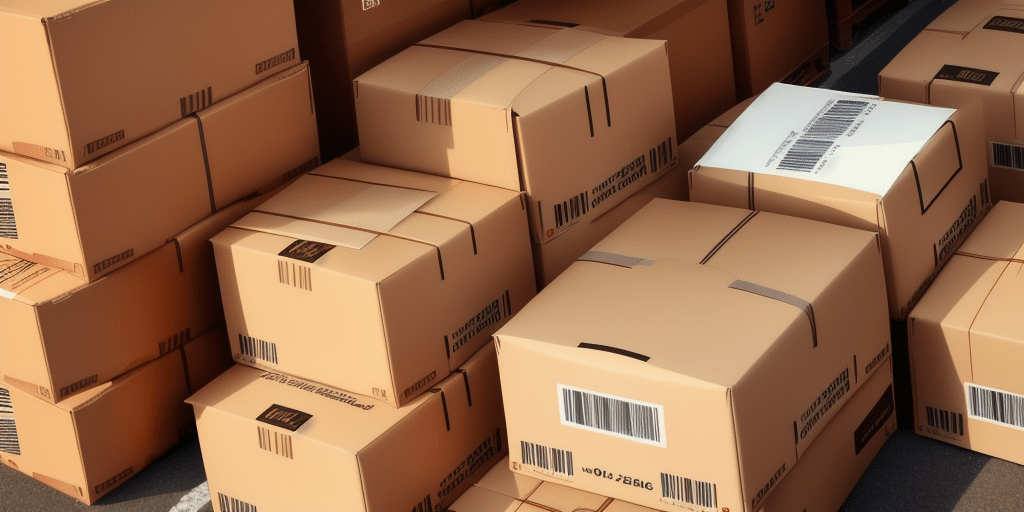Understanding the Costs of LTL Shipping
LTL shipping, or less-than-truckload shipping, is a popular option for businesses that need to ship smaller quantities of goods. However, comprehending the costs associated with LTL shipping can be challenging. This article delves into the critical factors influencing LTL shipping costs, provides strategies for reducing these expenses, and offers guidance on selecting the optimal LTL shipping provider for your business.
What is LTL Shipping and How Does it Work?
LTL shipping is a transportation method used to ship goods that do not require an entire truckload. Instead, multiple shipments from different customers are consolidated onto one truck, thereby reducing costs. LTL carriers typically calculate charges based on the shipment's weight, dimensions, and the distance it needs to travel, collectively referred to as the freight class.
When booking an LTL shipment, the carrier picks up the shipment and transports it to a hub for sorting based on destination. The shipment is then delivered to its final location through a combination of trucks and local carriers.
One significant advantage of LTL shipping is that it allows small businesses to access affordable shipping rates without bearing the cost of a full truckload. This is especially beneficial for businesses with limited shipping volumes or those exploring new markets without committing to large shipments.
Additionally, LTL shipping is more environmentally friendly compared to other transportation modes, as it reduces the number of trucks on the road. This helps lower carbon emissions and alleviate traffic congestion, supporting businesses in minimizing their environmental footprint.
Factors That Affect LTL Shipping Costs
Several elements influence the cost of LTL shipping, including:
- Weight and Dimensions: Heavier and larger shipments cost more due to the increased space and fuel required.
- Distance: Longer distances result in higher transportation costs.
- Freight Class: Determined by the shipment's density, stowability, and handling requirements. Higher freight classes are more expensive.
- Service Level: Expedited or guaranteed delivery services incur additional fees.
- Accessorial Fees: Extra charges for services like liftgate delivery, inside pickup or delivery, or hazardous materials handling.
- Seasonal Demand: Rates may fluctuate during peak seasons, such as holidays, due to increased demand.
- Weather Conditions: Adverse weather can lead to higher costs for additional precautions and resources.
According to the American Transportation Research Institute, fuel costs account for approximately 22% of total shipping expenses, highlighting the significant impact of fuel price fluctuations on LTL shipping costs. [Source]
The Pros and Cons of LTL Shipping
Choosing LTL shipping presents both advantages and disadvantages:
Advantages
- Cost-Effective: Pay only for the space your shipment occupies, avoiding the expense of a full truckload.
- Flexibility: Suitable for varying shipment sizes and testing new markets without large commitments.
- Environmental Benefits: Fewer trucks on the road contribute to lower carbon emissions.
Disadvantages
- Slower Transit Times: Shipments may take longer due to consolidation and multiple handling points.
- Risk of Damage or Loss: Increased handling can lead to a higher risk of damage or misplacement.
- Potential Delays: Integration with other shipments can cause unpredictability in delivery schedules.
Businesses relying on just-in-time inventory systems may find the potential delays associated with LTL shipping challenging.
How to Find the Best LTL Shipping Provider for Your Business
Selecting the right LTL shipping provider involves evaluating several factors:
- Pricing: Compare quotes from multiple carriers to understand market rates and identify cost-effective options.
- Transit Times: Assess the carrier's ability to meet your delivery deadlines consistently.
- Service Level: Ensure the carrier offers the specific services you require, such as expedited shipping or specialized handling.
- Safety and Reliability: Examine the carrier's safety record and on-time delivery performance. Carriers with high safety ratings and reliable delivery records are preferable.
- Coverage Area: Confirm that the carrier can deliver to all necessary locations, including remote areas if applicable.
- Customer Service: Choose carriers with responsive and supportive customer service teams to assist with inquiries and issues.
Leverage resources like the U.S. Department of Transportation to verify carrier credentials and safety records.
Tips for Reducing Your LTL Shipping Costs
Implement the following strategies to minimize your LTL shipping expenses:
- Consolidate Shipments: Bundle multiple shipments into a single load to reduce per-unit costs.
- Negotiate Rates: Engage in rate negotiations with carriers, especially if you have consistent or high-volume shipments.
- Optimize Packaging: Use efficient packaging to decrease shipment weight and dimensions, leading to lower freight class and costs.
- Optimize Routes: Collaborate with carriers to identify the most efficient shipping routes, saving time and fuel.
- Utilize Freight Brokers: Freight brokers can access a network of carriers to find competitive rates and shipping options tailored to your needs.
According to the Council of Supply Chain Management Professionals, optimizing packaging and load planning can lead to cost reductions of up to 15%. [Source]
Understanding Accessorial Fees in LTL Shipping
Accessorial fees are additional charges for services beyond standard transportation. Common accessorial services include:
- Liftgate Delivery: Required when there is no loading dock available.
- Inside Pickup or Delivery: Necessary when shipments need to be moved inside a facility.
- Hazardous Materials Handling: Involves special precautions and permits for transporting dangerous goods.
When booking your LTL shipment, discuss potential accessorial fees with your carrier to avoid unexpected costs. Evaluate whether these services are essential for your shipment or if alternative arrangements can be made to eliminate the fees.
Common Mistakes to Avoid When Choosing an LTL Carrier
Avoid the following pitfalls to ensure a smooth LTL shipping experience:
- Focusing Solely on Price: While cost is important, also consider service quality, reliability, and carrier reputation.
- Poor Packaging: Inadequate packaging can result in damage or loss. Use appropriate materials and secure your shipments properly.
- Ignoring Carrier Safety Records: Overlooking a carrier's safety and compliance history can lead to shipment delays or liabilities.
- Neglecting to Review Contracts: Failing to understand contract terms can result in unexpected fees or unfavorable conditions.
Ensuring comprehensive evaluations when selecting a carrier can mitigate these risks and promote successful shipping operations.
The Impact of Fuel Prices on LTL Shipping Costs
Fluctuations in fuel prices significantly affect LTL shipping costs, as fuel expenses constitute a substantial portion of transportation budgets. Rising fuel prices typically lead carriers to implement fuel surcharges, increasing overall shipping costs.
To mitigate the impact of fuel price volatility:
- Consider Alternative Transportation Modes: Explore options like rail or intermodal shipping, which may offer cost stability during fuel price hikes.
- Optimize Shipment Weight and Volume: Reduce the weight and size of your shipments to decrease fuel consumption and related costs.
- Plan Efficient Routes: Work with carriers to identify fuel-efficient routes that minimize mileage and fuel usage.
According to the Bureau of Transportation Statistics, fluctuations in fuel prices can account for up to 30% of a carrier's operating costs, underscoring the importance of strategic planning in managing these expenses. [Source]
How Technology is Changing the Landscape of LTL Shipping
Advancements in technology are revolutionizing the LTL shipping industry by enhancing efficiency, transparency, and customer experience:
- Online Booking and Tracking: Carriers offer digital platforms for booking shipments and real-time tracking, providing shippers with up-to-date information on their shipments' status.
- Data Analytics: Leveraging data analytics helps carriers and shippers identify optimal routing, improve load planning, and reduce costs.
- Internet of Things (IoT) Devices: Sensors monitor shipment conditions such as temperature and humidity, ensuring goods are transported under optimal conditions.
- Automated Documentation: Streamlining paperwork with digital documentation reduces errors and accelerates processing times.
Implementing these technologies can lead to improved operational efficiency and customer satisfaction in LTL shipping. [Source]
Comparing the Costs of LTL vs Full Truckload Shipping
When deciding between LTL and Full Truckload (FTL) shipping, it's essential to consider the nature and volume of your shipments:
- LTL Shipping: Ideal for smaller shipments that do not require an entire truckload. It offers cost savings by consolidating multiple shipments, but may involve longer transit times and potential handling risks.
- FTL Shipping: Suitable for larger shipments that fill an entire truck. FTL can be more cost-effective for high-volume shipments, offering faster transit times and reduced handling.
While LTL can be economical for smaller loads, FTL may provide better pricing for consistent, high-volume shipments. However, FTL often incurs additional costs such as accessorial fees and requires careful planning to maximize truckload capacity.
Consider factors like shipment frequency, volume, and delivery speed when choosing between LTL and FTL to ensure cost-efficiency and operational effectiveness.
Negotiating with Your LTL Carrier for Better Rates
Negotiating rates with your LTL carrier can lead to significant cost savings, especially if you have a steady volume of shipments. Here are some tips for effective negotiations:
- Provide Shipment Data: Present detailed information on your shipment volume, frequency, and patterns to demonstrate your value to the carrier.
- Commit to Long-Term Contracts: Offering longer-term commitments can incentivize carriers to provide more competitive rates.
- Bundle Services: Consolidate your shipping needs to negotiate better rates across multiple services.
- Leverage Multiple Carriers: Use competing offers from other carriers as leverage to secure favorable terms.
Building strong relationships with carriers and maintaining open communication channels are crucial for successful rate negotiations.
Understanding Transit Times in LTL Shipping
Transit times in LTL shipping can vary based on several factors:
- Distance: Longer routes naturally take more time to traverse.
- Carrier Network: The efficiency and reach of a carrier's network impact delivery speeds.
- Shipment Routing: Direct routes may offer faster delivery compared to routes with multiple stops and transfers.
- Seasonal Variations: Peak seasons can lead to increased transit times due to higher shipment volumes.
When booking LTL shipments, discuss expected transit times with your carrier and inquire about any factors that might affect delivery schedules, such as weather or operational constraints. If timely delivery is critical, consider expedited or guaranteed delivery services to ensure your shipments arrive on schedule.
The Importance of Proper Packaging for LTL Shipments
Proper packaging is vital to safeguard your LTL shipments during transit. Key considerations include:
- Strength and Durability: Use sturdy materials like double-walled corrugated cardboard to protect against handling and stacking pressures.
- Appropriate Sizing: Ensure packages are appropriately sized to reduce movement and potential damage during transit.
- Securing Contents: Utilize padding, void-fill materials, and secure straps to prevent shifting and impact damage.
- Labeling: Clearly label packages with handling instructions and destination information to facilitate proper handling.
Adhering to packaging best practices not only minimizes the risk of damage but can also influence freight class, potentially reducing shipping costs. [Source]
How to Track and Manage Your LTL Shipments Effectively
Effective tracking and management of LTL shipments ensure timely deliveries and help identify areas for improvement. Implement the following practices:
- Utilize Carrier Tracking Systems: Most carriers offer online tracking tools that provide real-time updates on shipment status and location.
- Implement Shipment Management Software: Consolidate shipment data from multiple carriers into a single platform for easier monitoring and analysis.
- Set Up Notifications: Enable alerts for key shipment milestones, such as pickup, departure, and delivery, to stay informed of any delays.
- Analyze Shipment Data: Regularly review shipment performance metrics to identify trends, optimize routes, and negotiate better rates.
Employing robust tracking and management systems enhances visibility, improves operational efficiency, and reduces the likelihood of shipment issues. [Source]
In conclusion, understanding the multifaceted costs of LTL shipping requires a comprehensive evaluation of various factors influencing pricing. By researching carriers, optimizing packaging, negotiating favorable rates, and leveraging technology, businesses can effectively reduce shipping costs and ensure the safe and timely delivery of their shipments.






















